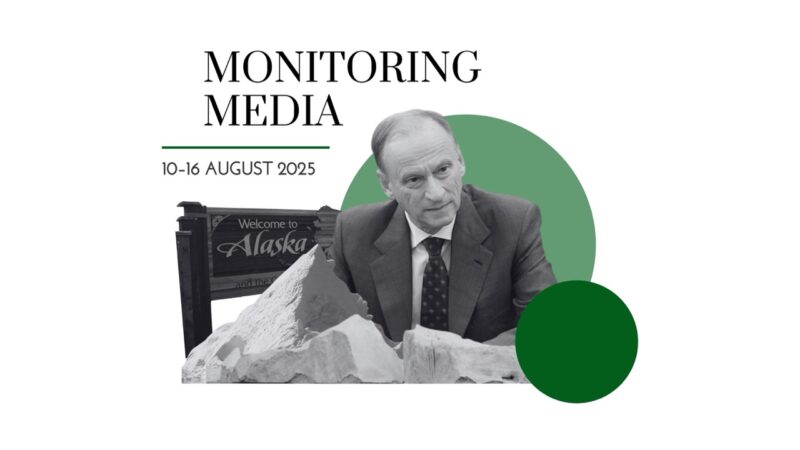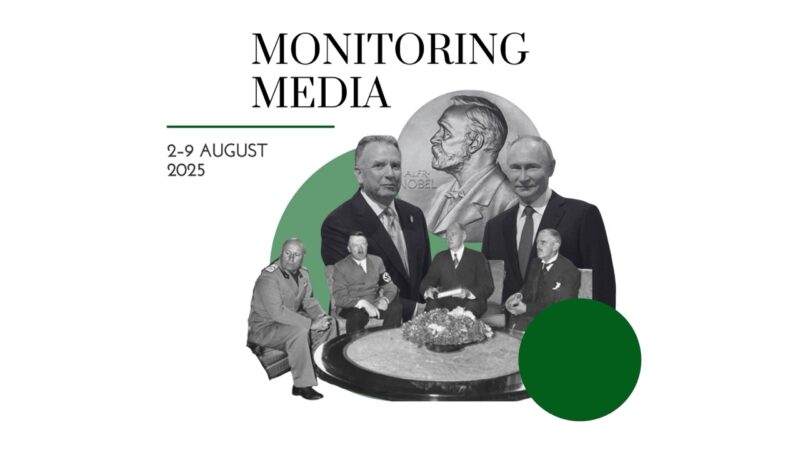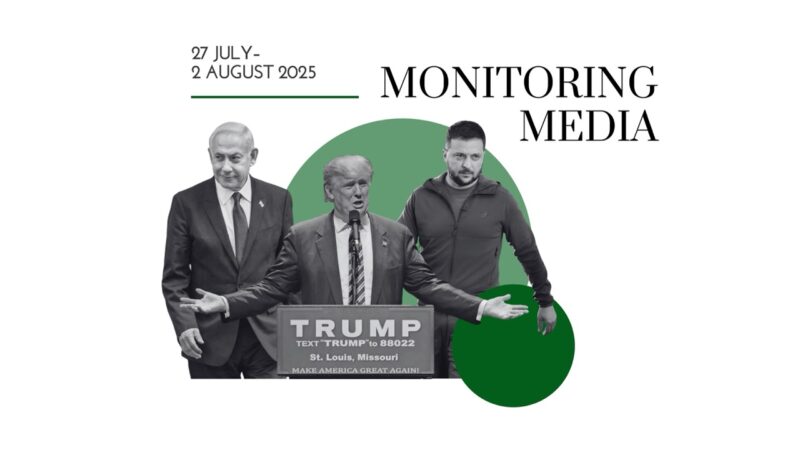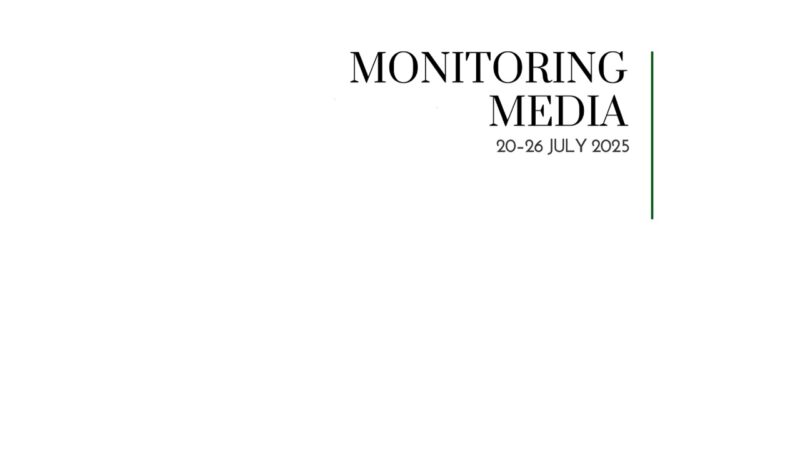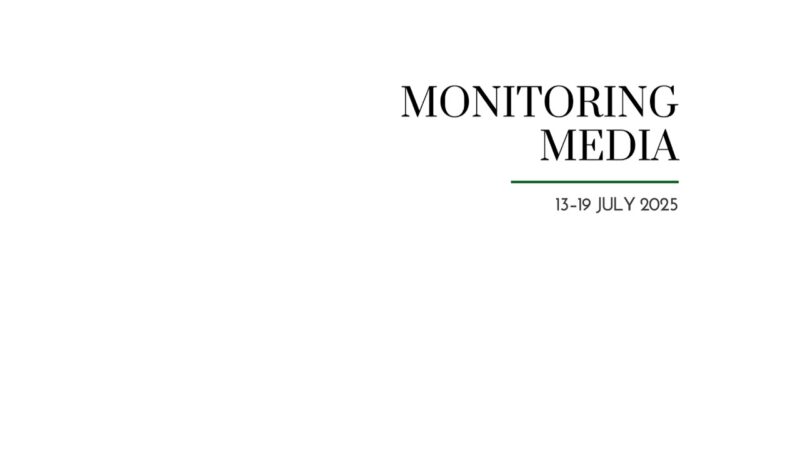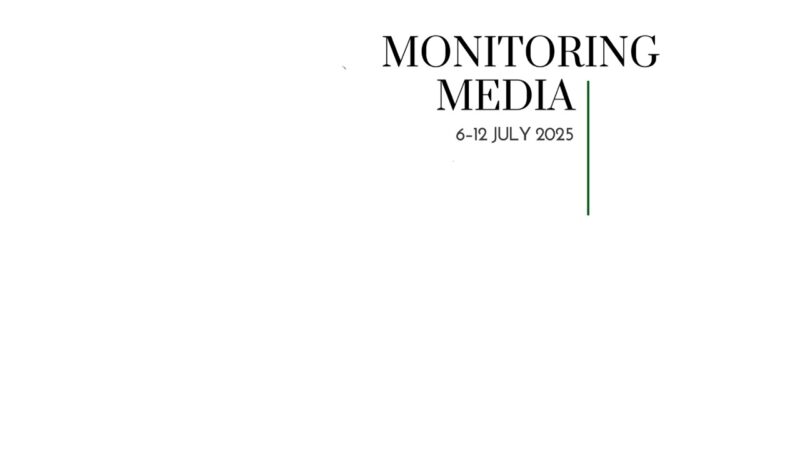Time for US to get tough with Russia
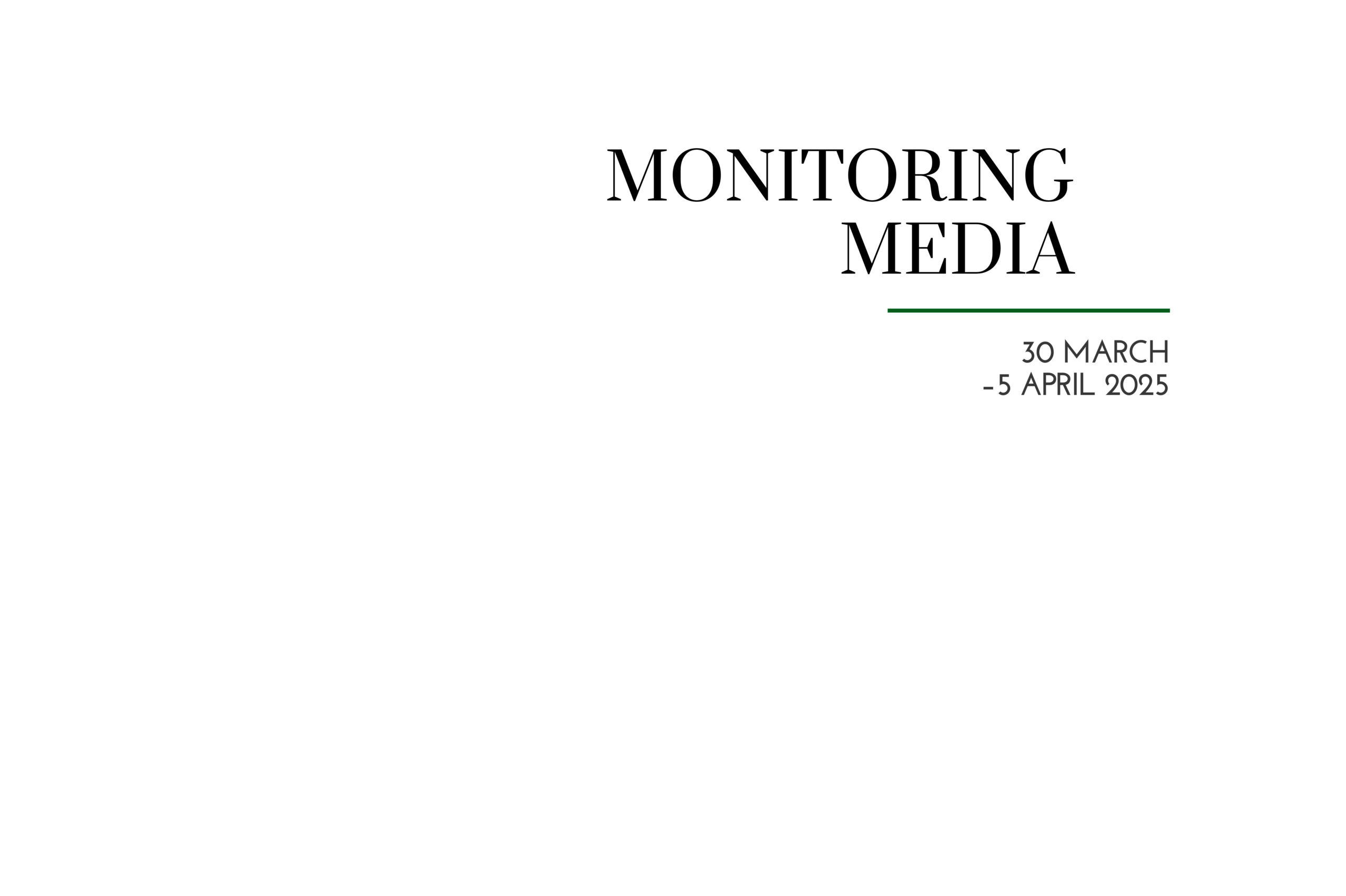
CIUS weekly report on North American media coverage of Ukrainian affairs, 30 March–5 April 2025
Five publications (Foreign Policy, The Washington Post, The National Interest, The New York Times, and Macdonald-Laurier Institute ) were selected to prepare this report on how Ukraine has been portrayed in the North American press during the past week. The sample was compiled based on their impact on public opinion as well as on their professional reputation, popularity among the readership, and topical relevance. These publications represent centrist viewpoints on the political spectrum.
This MMS report covers only the most-read and relevant articles about Ukraine, as ranked by the respective North American publications themselves in the past week. Its scope covers promoted articles on home pages and articles from special sections on Ukraine, with the hashtag #Ukraine, from the paper editions of the publications, and about Ukraine from opinion columns and editorials.
Featured topics
- The world and Ukraine: Washington must think bigger to save Ukraine; it’s time for maximum pressure; Trump recognizing that Putin seeks conquest, not peace.
- Russia at war: time for US to get tough with Russia; Russia sticking to its traditional approach to warfare.
MMS summaries
Washington must think bigger to save Ukraine. Robert Legvold (National Interest) argues that Ukraine’s security future should be integrated into Europe’s and directly into the process of restructuring US-Russian relations. Yet Washington’s approach contains many ‘ifs’ that make it almost impossible. To achieve a better outcome, the present Trump administration needs a broader and more holistic strategy. A 30-day ceasefire is the right way to start, but it should be the basis for a multi-level series of negotiations, not unilateral US diplomatic efforts to reach a peaceful settlement. At the same time, the US should improve its relations with European allies and help Ukraine increase its defence capabilities: “Creating a defensible Ukraine outside NATO is essential to reaching a peace agreement, and coordinating with Ukraine’s allies to achieve this is key to dealing with a peace-averse Putin.” According to Legvold, “Integrating all these pieces in a carefully calibrated fashion may be beyond the diplomatic prowess of any US administration. However, the success or failure of the Trump administration’s Russia policy will depend on the extent to which it does—or does not—try.”
It’s time for maximum pressure. Marc A. Thiessen (Washington Post) declares that the time has come for Washington to exert ‘maximum pressure’ on Moscow, which is unwilling to sit down with Kyiv. “In 2022, Putin planned for a war that would last weeks but now finds himself in a protracted conflict that is bleeding Russia’s human, military, and financial capital dry. That gives Trump enormous leverage. If Putin refuses his demands for peace, Trump can unleash an Iran-style maximum pressure campaign on Moscow that would devastate Russia.” According to the author, Russia has a weak position on the battlefield: “These glacial advances came at a cost of more than 427,000 Russian casualties either killed or wounded in 2024. […] Even pro-Putin Russian analysts admit that the average Russian soldier now survives less than one month on the front lines before being killed.” Russia’s military-industrial base cannot keep up with the current rate of losses: “Ukraine destroyed 12,000 Russian tanks and armored combat vehicles and 13,000 artillery systems in 2024. [Putin] is even recommissioning old Soviet tanks that were being used as movie props by Mosfilm, Russia’s largest film studio.” The economic situation in Russia is even more complicated than the battlefield situation: “Russia’s war spending (which is estimated at 41 percent of all state expenditures in 2025) has unleashed double-digit inflation, skyrocketing interest rates and catastrophic labor shortages. Last year, the price of butter rose 30 percent, and Russians are now stealing butter to resell on the black market.” The only thing that is saving the Russian economy from collapse is a sharp increase in revenues from oil and gas exports. According to Thiessen, “Putin has gravely miscalculated. If Trump decides the Russian leader is the obstacle to peace and brings down the hammer with economic sanctions and increased military support for Kyiv, Russia will be in a world of hurt. Because the reality is that Putin is economically and militarily weak and has no path to victory. He doesn’t hold the cards, Trump does. And he is getting ready to play them.”
Time for the US to get tough with Russia. Dennis Ross (Foreign Policy) also emphasizes that now is the best time for Washington to exert pressure to end Russia’s war against Ukraine. The key problem is that the White House’s pressure on Moscow, unlike that on Kyiv, is not obvious. This approach will not yield the desired result. The alternative ceasefire terms proposed by Moscow are favourable to Russia, and even if peace is achieved in the Black Sea, it will not stop Russia from conducting active hostilities: “Russia would continue its military advance—retaking the Russian areas [in Kursk oblast] that Ukraine had captured—even as it gains an end to Ukrainian attacks on its oil infrastructure, which have been taking a toll.” The White House should be prepared to give Russia a hardline response to its aggression against Ukraine: “Put simply, if Trump wants to end the war, he will need to play hardball with Putin—and he has the means to do so. But Putin must believe it.” In the author’s opinion, there hasn’t been a clear signal yet, but “greater military backing for Ukraine coupled with Trump signaling that he will support using the $300 billion in frozen Russian assets for the Ukrainian economy and reconstruction could make a difference.” For President Trump, it is important to have “a clear picture of an acceptable or defensible peace—one in which, for example, Ukrainian sovereignty is not compromised, Kyiv can become a member of the European Union, the territorial adjustments are modest or the result of an internationally run referendum, and peacekeepers in Ukraine make the security assurances real.” According to Ross, “In other words, Trump can use American leverage—combined with the Europeans, because they control the bulk of the frozen Russian assets—to achieve his objective of ending the war.”
Russia is sticking to its traditional approach to warfare. Stavros Atlamazoglou (National Interest) suggests that each country’s military has its own cultural identity. The American way of war hinges on manoeuvre warfare, surprise attacks, and encirclement. The Russian way of warfare places considerable emphasis on total superiority in manpower and weapons systems: “During the First World War, for example, the Tsar’s generals threw literally millions of men against the German and Austro-Hungarian forces. Mobilizing the country’s vast serf population resulted in a huge force. But the Germans and Austro-Hungarians—the latter of which fared little better in the tactical realm—inflicted repeated defeats on Russia, showing that better strategy, equipment, and logistics could outperform larger armies. During World War Two, Joseph Stalin and the Kremlin mobilized the vast resources of Russia to an unprecedented degree. What would have otherwise been considered catastrophic defeats were seen as an acceptable price for victory by the Russian forces.” In its war against Ukraine, Russia is pursuing a strategy that is remarkably similar to that of the past—using overwhelming numerical superiority in men and weapons systems to achieve its goals on the ground. According to Atlamazoglou, “Currently, these goals are all about territory. Russian President Vladimir Putin wants as much Ukrainian territory as possible before any peace settlement. Accordingly, the Russian military exchanges men for territory. While it might be seen as odd and cynical to the average Western observer, the Russian military is doing exactly what it knows how to do.”
[MMS observes that Russia’s targeted wide-ranging infliction of damage beyond the battlefield—including civilian infrastructure, hospitals, and cultural institutions—strongly suggests not only territorial acquisition but predatory genocide as a key goal of its war against Ukraine.]US must stand firm against Russian aggression. Don Bacon (New York Times) argues that the United States must maintain steadfast support for Ukraine in its resistance against Russia’s aggression, warning that rewarding President Putin for his actions would be morally wrong and strategically damaging. President Trump’s recent diplomatic efforts to negotiate an end to the war must not inadvertently legitimize or appease Russian demands. Trump and some Republicans have faced criticism for their lenient stance toward Russia: “Too many of my fellow Republicans—including Mr. Trump—have treated Russia with velvet gloves, shying away from calling out Mr. Putin’s flatly illegal war.” Bacon urges Republicans to reaffirm their commitment to opposing Putin’s expansionist goals and to strongly support Ukraine’s sovereignty. Supporting Ukraine aligns with vital American national interests, Bacon highlights, warning that Russia’s victory would embolden other authoritarian regimes and destabilize global security. Moreover, Russia’s control over Ukraine’s agricultural exports and shipping lanes could have far-reaching economic implications: “Should Russia gain control of Ukraine’s coast and Black Sea shipping lanes…food prices will rise across the world, including in the United States.” It is possible to achieve peace in Ukraine while maintaining moral clarity by holding Russia accountable and safeguarding America’s long-term national interests. This moment demands the kind of steadfast leadership exemplified by Ronald Reagan, the author concludes, noting that the stakes for all involved are far too significant to hesitate or weaken in Western resolve.
Canada-Japan cooperation critical to counter Russian disinformation threat. Marcus Kolga (Macdonald-Laurier Institute) observes that Russia’s disinformation operations against Japan pose a significant threat to democracies globally, exploiting historical grievances and current geopolitical tensions to advance Moscow’s strategic interests. Kolga explains that Japan’s vulnerability to malicious actors stems from its membership in the G7, alliance with the United States, and its democratic institutions, making it “a prime target of Russian information and influence operations.” Russia utilizes state-controlled media, orchestrated online campaigns, selective historical narratives, and geopolitical framing to destabilize public opinion in Japan—particularly around sensitive issues like the Kuril Islands dispute, which Moscow “weaponizes” to distort facts and diminish international support for Japan’s position. The author emphasizes that Canada, facing similar threats, should closely collaborate with Japan to counter Russia’s information warfare tactics. Specifically, he calls for a unified front involving enhanced “intelligence-sharing, joint response mechanisms, and deterrence strategies.” Recommended measures include: (1) bilateral and multilateral exchanges of threat intelligence; (2) early-warning systems, leveraging AI tools; and (3) coordinated media responses to debunk disinformation. Additionally, Kolga advises coordinated diplomatic and economic deterrence, such as targeted sanctions and joint diplomatic condemnations, to increase the costs for Russia’s influence operations. The author underscores the urgency and benefits of a strategic Canada-Japan partnership, noting that “defending democratic societies from foreign influence is a collective endeavor—one that cannot succeed if nations act alone.”
Trump appears to recognize that Putin seeks conquest, not a peace settlement. The editorial board of the Washington Post argues that US President Donald Trump may finally be shifting his stance on Russia’s war against Ukraine, recognizing that President Vladimir Putin is not serious about peace and is continuing to pursue an illegal land grab. “Putin’s top officials made this much clear in recent days by rejecting White House proposals for a 30-day truce,” the authors note, as Russia persists with missile attacks on Ukrainian cities and energy infrastructure. Trump, now expressing frustration, told NBC News he was “very angry, pissed off” with Putin and even threatened to impose secondary sanctions on countries buying Russian oil and gas, a move that could severely disrupt Russia’s economic lifelines. These sanctions would mirror Trump’s recent tariff strategy on Venezuelan oil buyers and reflect growing pressure within US politics to hold Russia accountable. The board also highlights a rare bipartisan effort in the Senate, led by Lindsey Graham and Richard Blumenthal, to back legislation that imposes up to 500 percent tariffs on nations trading with Russia if Moscow fails to negotiate in good faith. However, implementing such measures would test Trump’s relationships with autocratic leaders in countries like India, Turkey, and Hungary—all major buyers of Russian energy and aligned with Trump politically. The authors urge the US to remain clear-eyed about what’s at stake: “In this conflict, there is just one aggressor, Russia, and one victim, Ukraine, and the United States should be firmly on Ukraine’s side.” If Trump truly recognizes this, even belatedly, the shift could mark a meaningful turn in US policy—and a much-needed reinforcement of American credibility and democratic principles.
